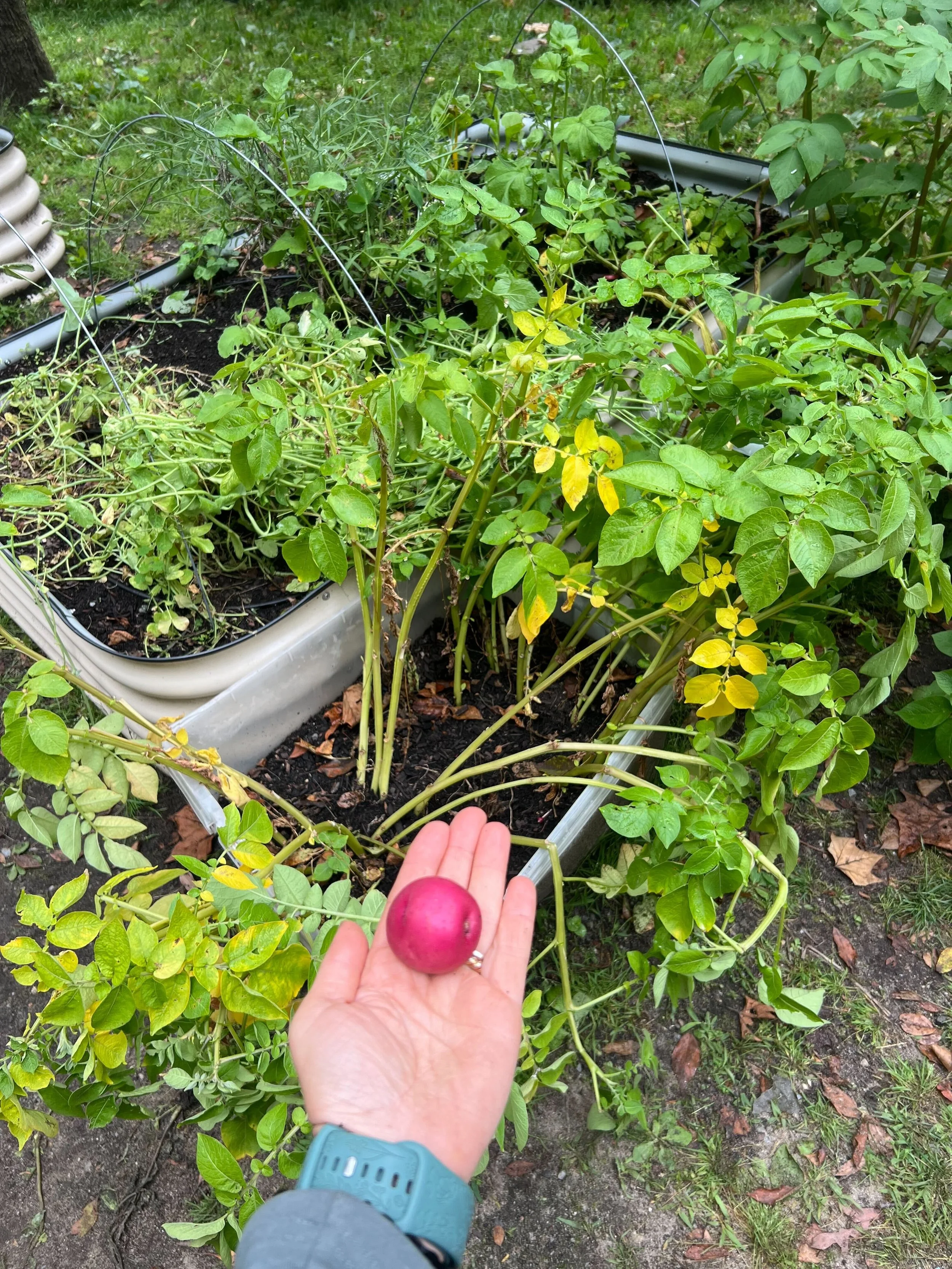Potato - תַּפּוּחַ אֲדֻמָה
Agricultural Information:
Plant Family: Solanaceace, Convolvulaceae
Scientific name: Solanum tuberosum
Potatoes are plants that grow 1–3 feet tall, native to the Andes Mountains of South America with over 4,000 varieties. The edible part is the underground tuber, which develops from stems called stolons. While technically a perennial plant, potatoes are usually grown as annual crops and harvested after one season.
The word potato comes from the Spanish patata, which sounds very close to batata (sweet potato). Despite the similarity, sweet potatoes belong to the morning glory (Convolvulaceae) family, while potatoes are in the nightshade family (Solanaceace).
Sweet potatoes grow as trailing vines with heart-shaped leaves and trumpet-shaped flowers. The edible part is a storage root, not a true tuber like a potato.
Potatoes are planted using seed potatoes, with each eye (bud) capable of producing a new stem. Seed pieces are planted containing one to two healthy eyes to ensure successful growth.
Potatoes became a staple crop because of their reliability and nutrition. They are eaten boiled, mashed, baked, fried, and in soups. They are also commonly made into flour, starch, and even used in making vodka.
Halachic Information:
Kilei zera’im & kilei hakerem (interplanting – annuals & grapevines) Potatoes are classified as a vegetable. Therefore, it should not be planted near other annuals or a grapevine.

